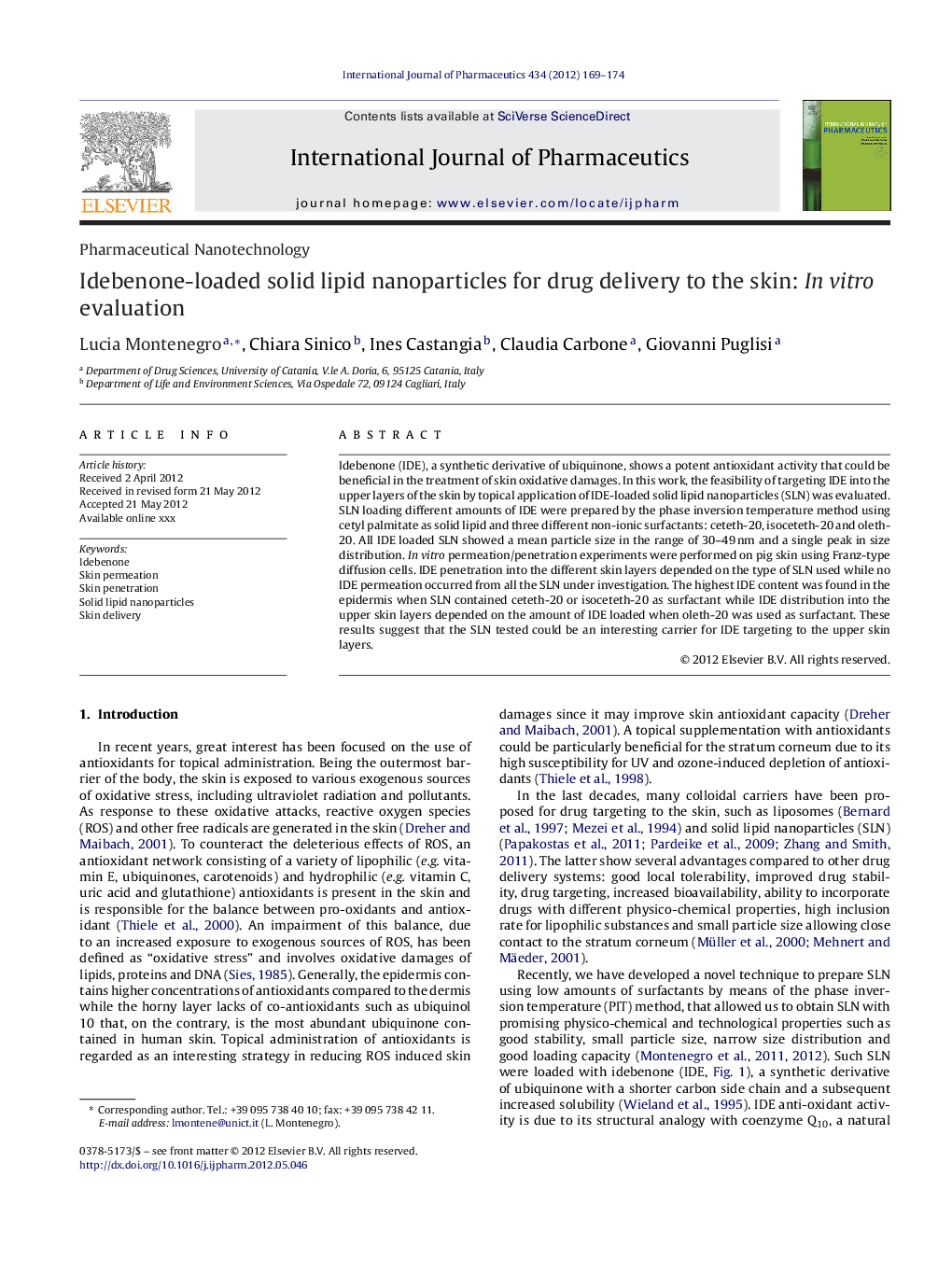| Article ID | Journal | Published Year | Pages | File Type |
|---|---|---|---|---|
| 5820555 | International Journal of Pharmaceutics | 2012 | 6 Pages |
Abstract
Idebenone (IDE), a synthetic derivative of ubiquinone, shows a potent antioxidant activity that could be beneficial in the treatment of skin oxidative damages. In this work, the feasibility of targeting IDE into the upper layers of the skin by topical application of IDE-loaded solid lipid nanoparticles (SLN) was evaluated. SLN loading different amounts of IDE were prepared by the phase inversion temperature method using cetyl palmitate as solid lipid and three different non-ionic surfactants: ceteth-20, isoceteth-20 and oleth-20. All IDE loaded SLN showed a mean particle size in the range of 30-49Â nm and a single peak in size distribution. In vitro permeation/penetration experiments were performed on pig skin using Franz-type diffusion cells. IDE penetration into the different skin layers depended on the type of SLN used while no IDE permeation occurred from all the SLN under investigation. The highest IDE content was found in the epidermis when SLN contained ceteth-20 or isoceteth-20 as surfactant while IDE distribution into the upper skin layers depended on the amount of IDE loaded when oleth-20 was used as surfactant. These results suggest that the SLN tested could be an interesting carrier for IDE targeting to the upper skin layers.
Related Topics
Health Sciences
Pharmacology, Toxicology and Pharmaceutical Science
Pharmaceutical Science
Authors
Lucia Montenegro, Chiara Sinico, Ines Castangia, Claudia Carbone, Giovanni Puglisi,
